Following information and pictures published on the Internet and Social Networks, Army Recognition Editorial Team makes an analysis of artillery vehicles and weapons used by the Ukrainian and Russian armed forces in the current conflict in Ukraine.
Follow Army Recognition on Google News at this link
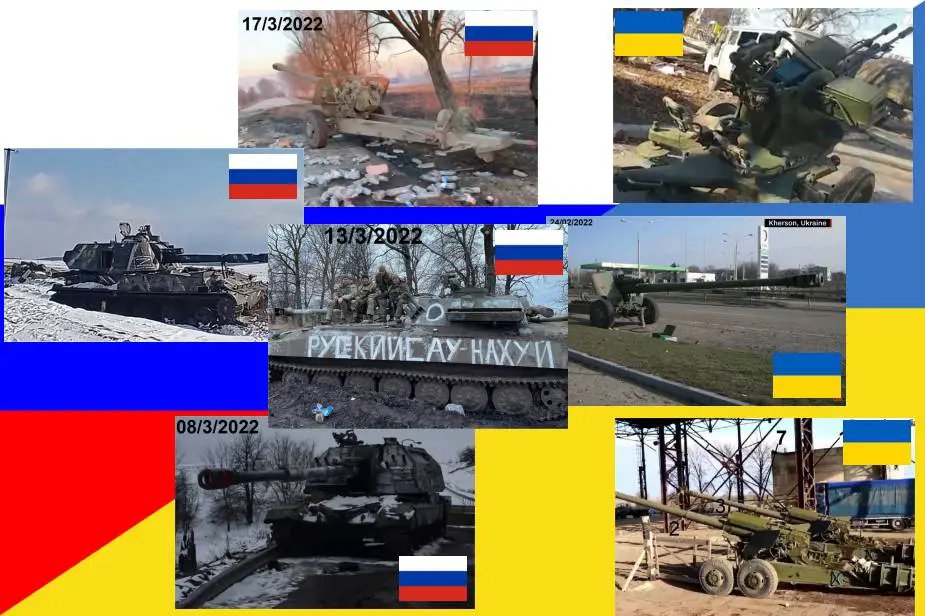
Analysis: Russian and Ukrainian artillery vehicles and weapons fighting in Ukraine
According to an unclassified report, Russian artillery still operates on the old principle of mass, and can cover an area greater than 1 km2 with fire. These types of fires can be directed against a static or moving enemy. Because of the volume and intensity of fire it is possible to inflict massive casualties against a moving armored enemy just based on the sheer volume of fire.
Russian artillery still operates on the old principle of mass and can cover an area greater than 1 km2 with fire. These types of fires can be directed against a static or moving enemy. Because of the volume and intensity of fire, it is possible to inflict massive casualties against a moving armored enemy just based on the sheer volume of fire.
The employment of UAS (Unmanned Aerial System) by Russian Forces adds another dimension to their fires capability. In Eastern Ukraine, Russian Forces have demonstrated their ability to direct and adjust fires with their drones. Ukrainian forces have repeatedly seen a systematic approach by the Russians to acquire a target with a UAS. A high-level UAS will identify a Ukrainian target. It will then pass off that target to another lower-level UAS to determine the target coordinates. Then the Russians will adjust their fire with the UAS based on the initial artillery strikes. The total time for this process can be as little as 10-15 minutes.
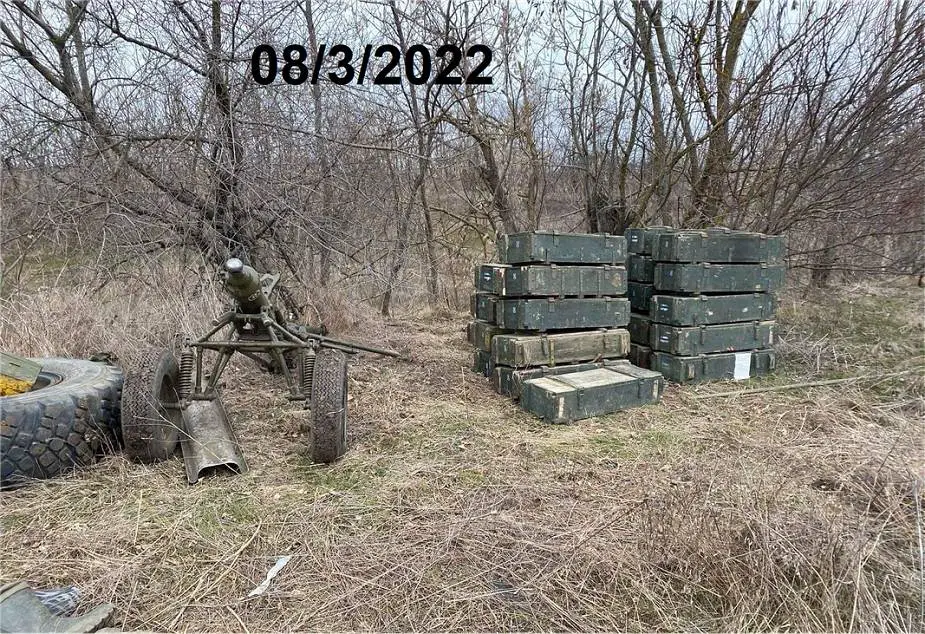
2B11/2S12 120mm mortar Russia
ARTILLERY RUSSA
2B11/2S12 120mm mortar
The 2B11 also nicknamed Sani is a 120 mm mortar developed by the Soviet Union in 1981 and subsequently fielded in the Russian Army. The mortar system includes the 120mm 2B11 mortar, 2L81 wheeled carriage, and 2F510 transport vehicle.
The 2B11 fires 120mm ammunition at a maximum range of 7.1 km. The maximum rate of fire is 15 rounds per minute while 10 rounds per minute is the normal rate of fire.
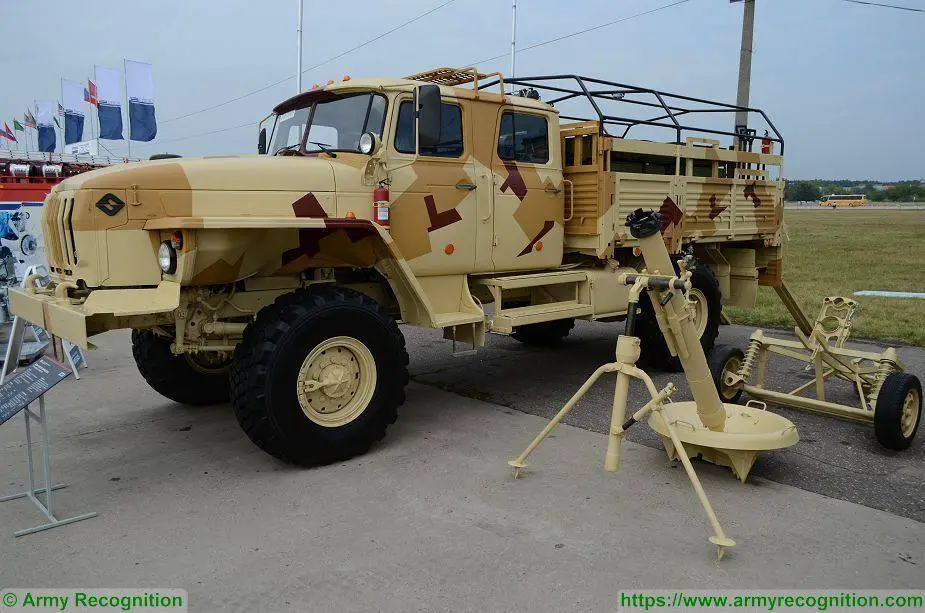
2S12A 12mm mortar Russi (Picture not taken in Ukraine)
2S12A 120mm mortar
The 2S12A is an improved version of the 2S12 that was developed in the 2000s. It uses a new "Ural" family transport vehicle with high-power diesel engine and electric hoist for loading the mortar and a new base plate with a hinge that allows for pointing horizontally without turning the heavy support.
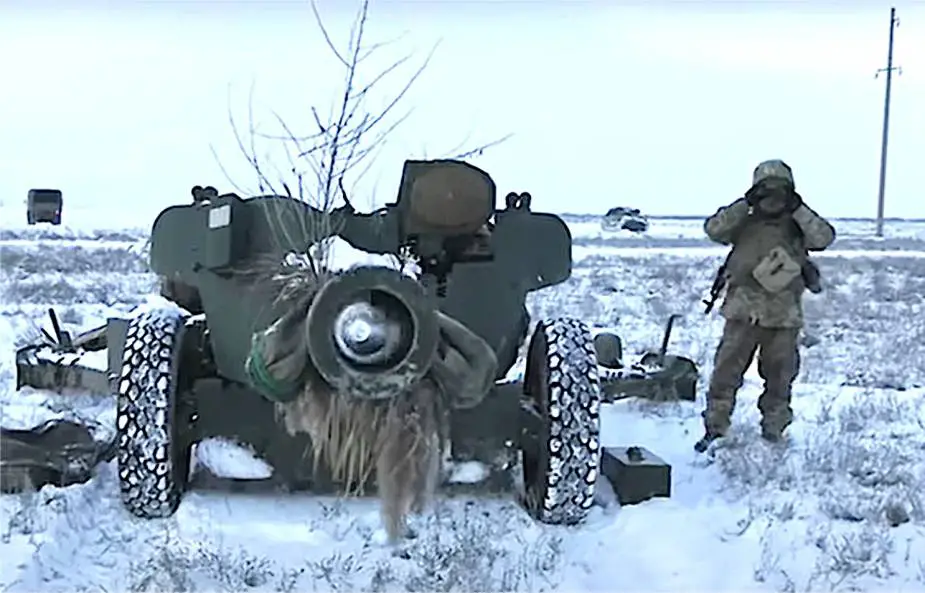
MT-12 100mm towed gun Russia
MT-12 100mm towed gun
The MT-12 Rapira is a Soviet-made towed anti-tank gun that was developed in late 1960. It is an improved version of the T-12 anti-tank gun. It can fire different types of ammunition including the Armor-Piercing Fin-Stabilized Discarding Sabot (APFSDS), High-Explosive Anti-Tank (HEAT), and 4 High-Explosive Fragmentation (HE-FRAG). The APFSDS round has a maximum range of 3 km. The HEAT round has a maximum range of 5.95 km. The HE-FRAG round has a maximum range of 8.2 km
The T-12/MT-12 is operated by a six-man crew consisting of a detachment commander, driver of the towing vehicle, gun layer on the left, loader on the right, and two ammunition numbers.
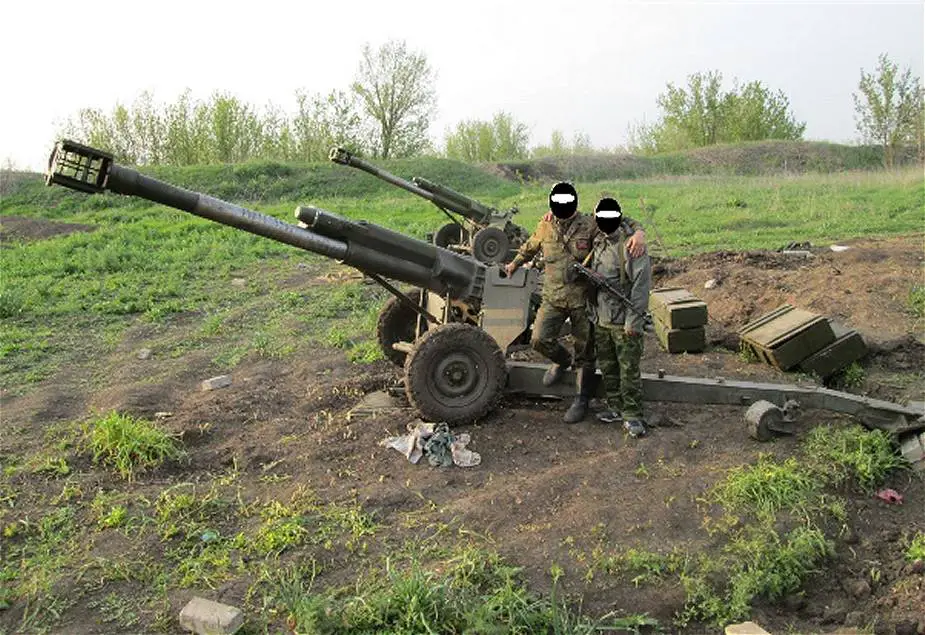
2B16 Nona-K 120mm towed gun Russia
2B16 Nona-K 120mm towed gun
The 2B16 Nona-K is a 120mm towed gun based on the 120mm Nona gun which also served as the basis for the 2S9 Nona-S and 2S23 Nona-SVK self-propelled guns. Nona-K combines the capabilities of a gun, a mortar, and a howitzer into a single weapon system that can effectively engage troops, fortifications, and armored vehicles.
The 2B16 can fire different types of ammunition including HE-fragmentation, shaped-charge Rocket Assisted Projectiles (RAPs), 120mm HE fragmentation, illuminating, smoke, and incendiary mortar rounds including those designed for NATO's 120mm mortars. It has a maximum firing range of 11 km.
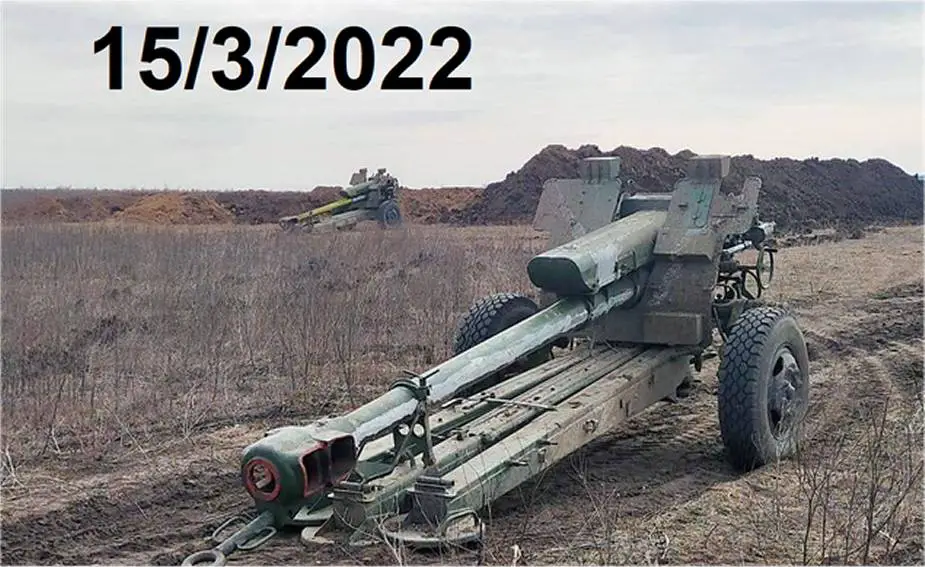
D-30 122mm towed howitzer Russia
D-30 122mm towed howitzer
The D-30, Russian designation 2A18, is a Russian-made 122 mm towed howitzer that first entered service in the 1960s with the Russian army. The D-30 is designed to defeat unsheltered and covered manpower, weapons and military equipment of the enemy at the forward edge of the battle area and to the regiment's mission depth.
The D-30 uses the 2A18 gun which is also used by the Russian 2S1 tracked self-propelled howitzer. The maximum rate of fire of the D-30 is 6-8 rounds per minute and about 75 rounds per hour. The D-30 fires FRAG-HE and HEAT-FS variable-charge, case-type, separate-loading ammunition. Using standard HE-Frag shells, the D-30 has a maximum firing range of 15.4 km.
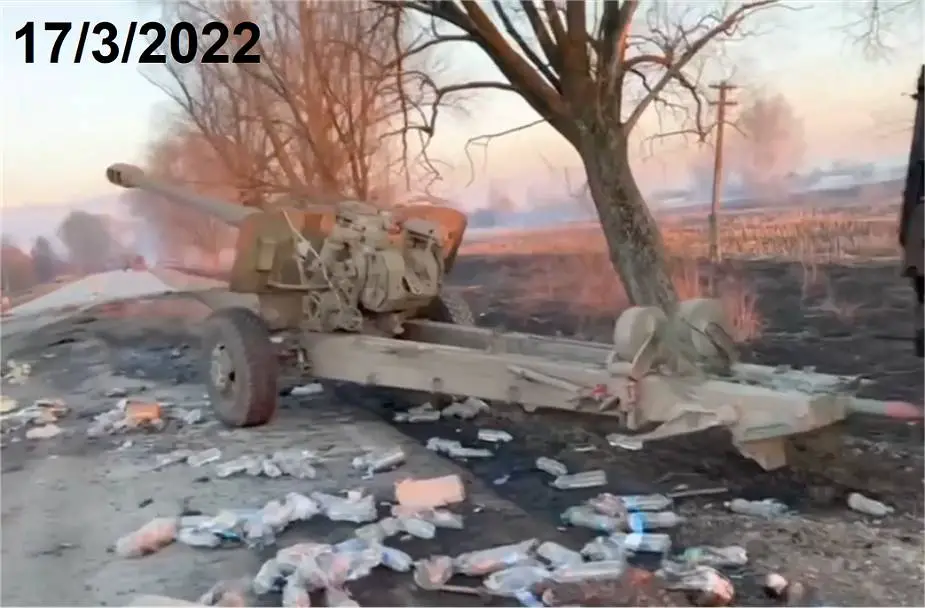
2A65 Msta-B 152mm towed howitzer Russia
2A65 MSta-B 152mm towed howitzer
The 2A65 "Msta-B" is a Soviet towed 152.4 mm howitzer. The "B" in the designation is an abbreviation for Buksiruyemaya, which means towed. This is the same 152-mm weapon as the 2S19 on a two-wheel towed carriage with split trails. The towed gun preceded the 2S19 into production.
The gun fires the same 152 mm ammunition types like the 152 mm 2S19 self-propelled artillery system and, more recently, a new family of separate loading (for example projectile and charge) 152 mm has been introduced. It has a maximum firing range of 28.9 km.
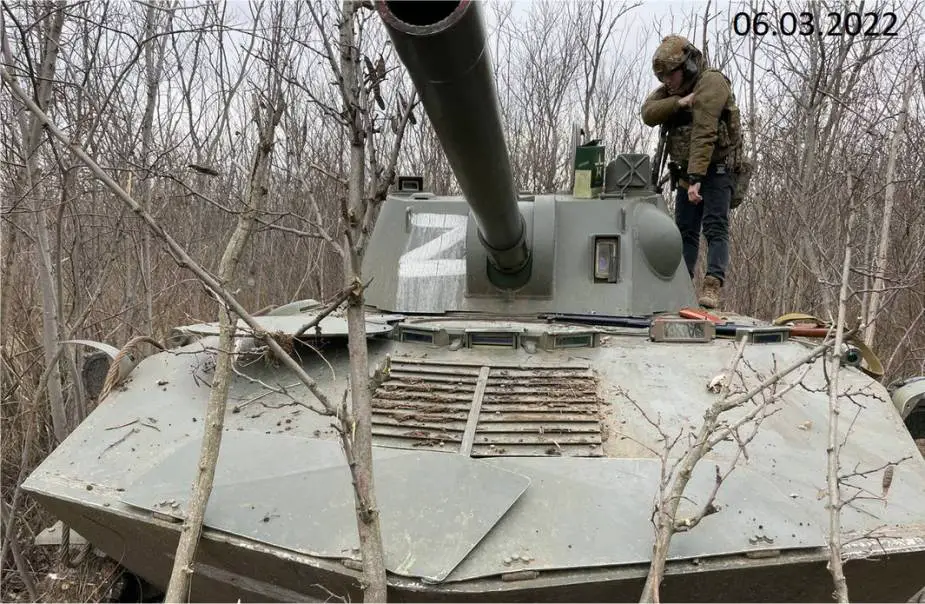
2S9 120mm tracked self-propelled mortar carrier Russia
2S9 Nona 120mm tracked mortar carrier
The 2S9 NONA is an extremely light-weight tracked self-propelled and air-droppable 120 mm gun-mortar carrier that entered into service with the Russian army in 1981. The vehicle is based on the chassis of the airborne tracked armored vehicle BTR-D.
The 2A51 breech loaded 120mm smoothbore gun mortar is the main armament of the 2S9. The turret allows for a limited traverse left and right. The maximum effective range is 8.8 km and 13 km with assisted ammunition. The rate of fire is 6 to 8 rounds per minute. As a gun mortar, it is capable of direct fire and special HEAT ammunition is available for use against armored vehicles.
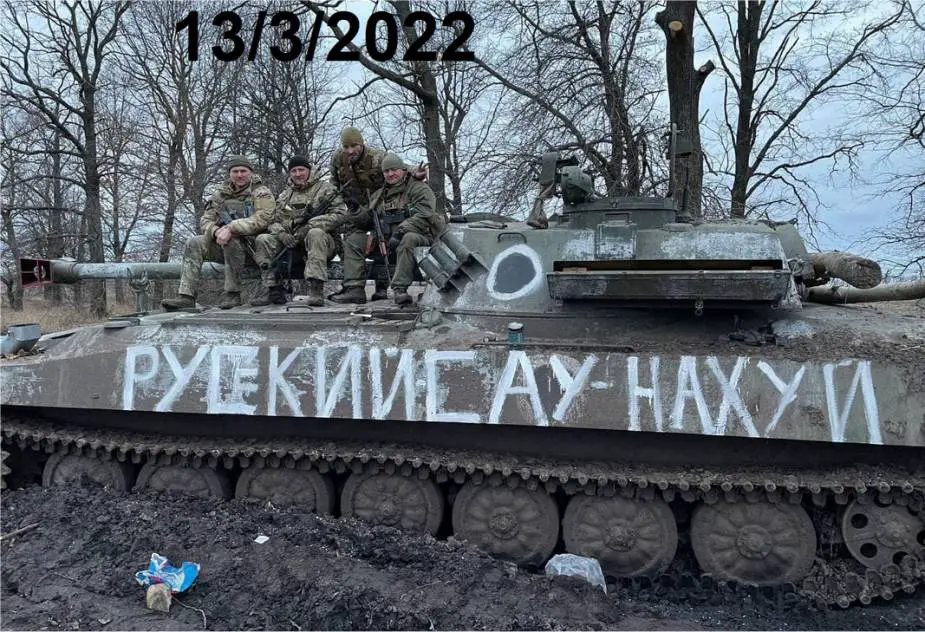
2S34 120mm tracked self-propelled mortar carrier Russia
2S34 120mm tracked mortar carrier
The 2S34 "Chosta" or "Hosta" is a 120mm self-propelled mortar carrier designed and manufactured in Russia. The 2S34 was first revealed at the TVM-2014 Moscow Defense exhibition, in August 2014. The vehicle is an evolution of the Soviet-made 2S1 "Gvozdika", a 122mm self-propelled howitzer.
The 2S34 "Chosta" or "Hosta" is equipped with the 120mm 2A80-1 mortar gun. The 2A80-1 is equipped with a new fire control system that improved accuracy, rate-of-fire and allows the gun to shoot all types of 120mm shells from a distance of 500m to 14km. The 2A80-1 can also fire guided munitions like the laser-guided 3VOF112 "Kitolov-2" shell. Even some 120mm NATO shells can be used with the 2A80-1.
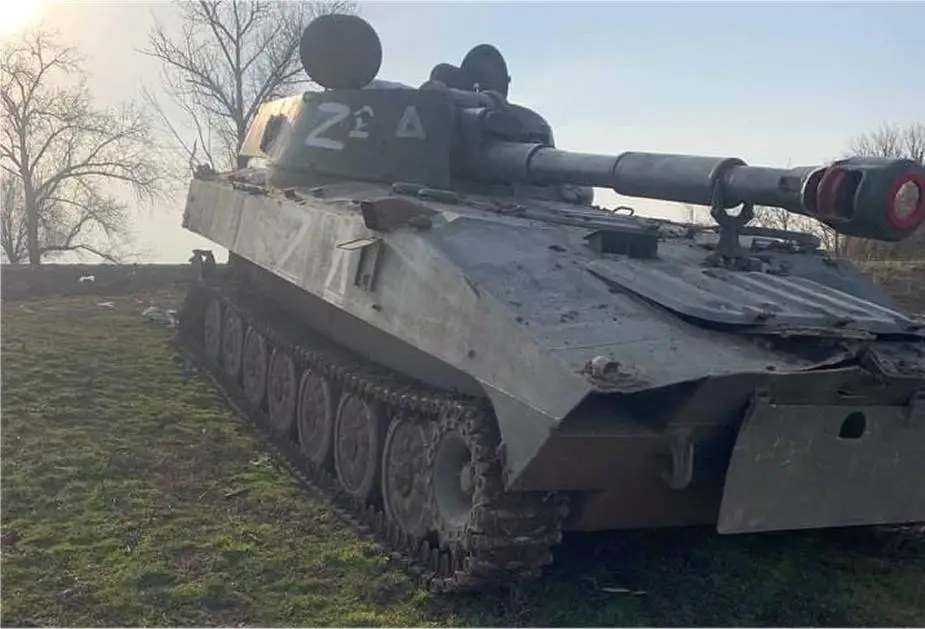
2S1 122mm tracked self-propelled howitzer Russia
2S1 Gvozdika 122mm tracked self-propelled howitzer
The 2S1 Gvozdika is a Russian-made 122mm tracked self-propelled howitzer armored vehicle. The first prototype was ready in 1969. The 2S1 entered service with the Soviet Army in the early 1970s and was first seen in public at a Polish Army parade in 1974.
The 2S1 is armed with a modified version of the 2A31 cannon which is also fitted to the D-30 towed howitzer. The Gvosdika is compatible with all 122-mm munitions developed for the D-30 howitzer. These include fragmentation, HE-FRAG, HEAT, cluster, smoke, and illumination projectiles. A total of 40 rounds are carried, usually 35 HE-FRAG and 5 HEAT. Maximum range of fire with HE-FRAG projectile is 15.2 km.
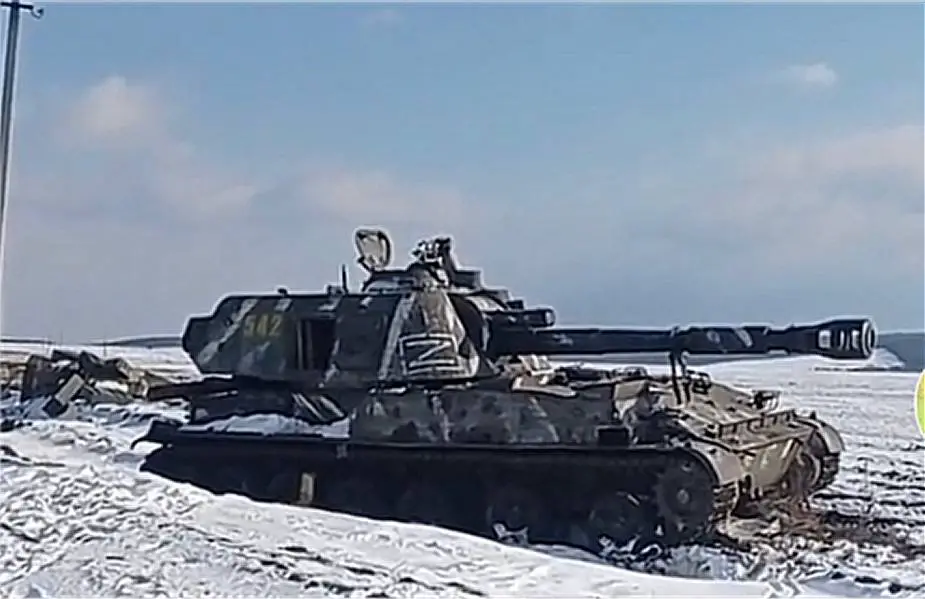
2S3 Akatsiya 152mm tracked self-propelled howitzer Russia
2S3 Akatsiya 152mm tracked self-propelled howitzer
The 2S3 Akatsiya is a Russian-made 152 mm self-propelled howitzer based on a tracked armored vehicle. The system was accepted for service with the Russian army in December 1971 although production had commenced the previous year. The 152mm 2S3 Akatsiya is designed to engage enemy personnel in the open and under shelter and to wipe out the adversary's weapons, military equipment, and other targets to the depth of a division limit of advance.
The 2S3 Akatsiya is armed with the 2A33 152 mm howitzers, which is a modified variant of the D-20 towed howitzer but with a bore, evacuator added behind the muzzle brake. The 2S3 can fire a wide range of ammunition including the HE-FRAG OF-540, which is fitted with an RGM-2 fuse, weighs 43.5 kg, contains 5.76 kg of TNT, and has a maximum muzzle velocity of 655 m /s and a maximum range of 18,500 m. Other types of projectiles fired include BP-540 HEAT-FS (also referred to as HEAT-SS, for spin-stabilized), HE/RAP (High-Explosive Rocket-Assisted Projectile) with a range of 24,000 m, AP-T, illuminating, smoke, incendiary, flechette, scatterable mines (anti-tank and anti-personnel) and the Krasnopol laser-designated projectile covered in the entry for the 152 mm 2S19.
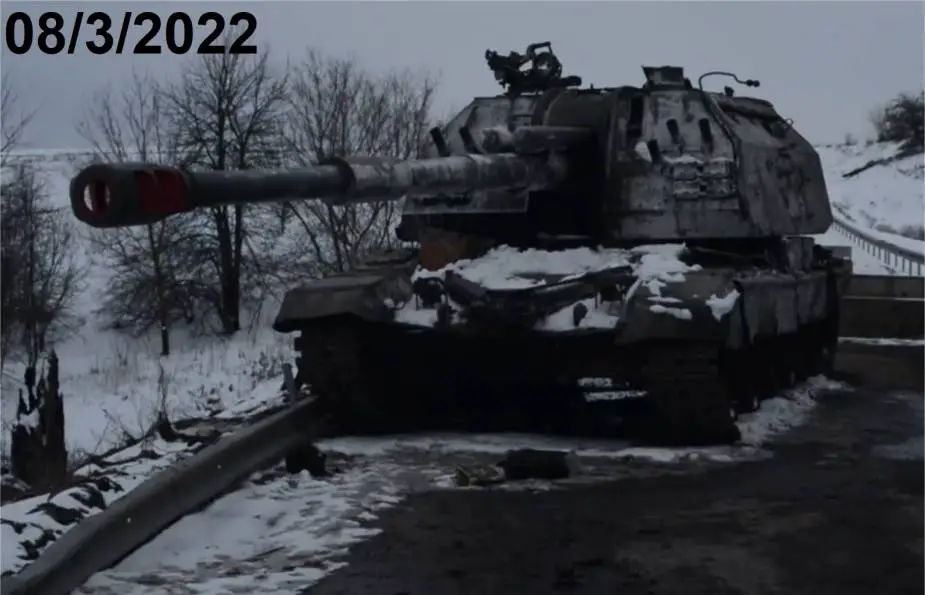
2S19 Msta-S 152mm tracked self-propelled howitzer Russia
2S19 Msta-S 152mm tracked self-propelled howitzer
The 152 mm 2S19 MSTA-S self-propelled howitzer is designed to defeat unsheltered and covered manpower, weapons, and materiel to division level. The 2S19 was accepted for service with the former Soviet Army in 1989. In the Russian Army, the 2S19 is normally deployed in batteries of six guns. Each regiment would normally have three batteries to give a total strength of 18 2S19 systems. The 2S19 is also called MSTA-S, with the S standing for Samokhodnyj, or self-propelled.
The main armament of 2S19 comprises a long-barreled 152 mm gun, the 2A64, fitted with a fume extractor and a muzzle brake. The 152 mm 2A64 gun fires a HE-FRAG (high-explosive fragmentation) round designated OF-45 to a maximum range of 24.7 km. When the 2S19 is traveling the ordnance is held in position by a traveling lock mounted on the glacis plate. An NSVT machine gun 12,7 mm is mounted to the vehicle commander hatches, which can be remotely controlled, with a searchlight, which can be remotely controlled from under full armor protection.
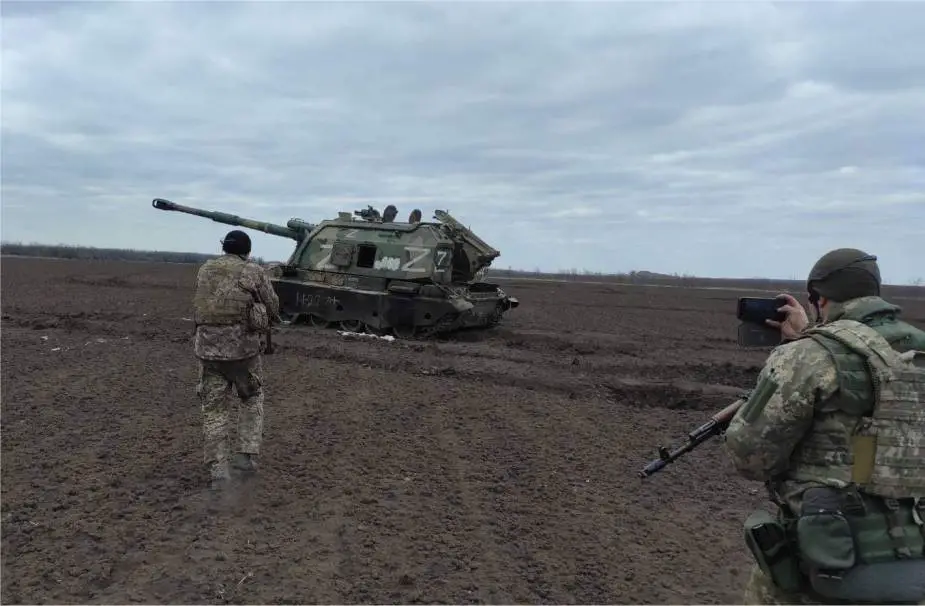
2S33 Msta-SM2 152mm tracked self-propelled howitzer Russia
2S33 Msta-SM2 152mm tracked self-propelled howitzer
The 2S33 Msta-SM2 is an improved variant of the 2S19 Msta-S that was revealed in 2013. The 2S33 MSTA-SM2 howitzer is fitted with a new 2A79 152 mm/L60 ordnance that has improved ballistics. It can fire ammunition with more propellant charges and with a higher breech pressure than the 2S19 Msta-S.
The 2S3 has a maximum firing range of 30 km using a standard HE-FRAG shell and 40 km with a rocket-assisted shell. The gun is compatible with all standard 152 mm ammunition used by the 2S19 Msta-S self-propelled howitzer, 2A65 Msta-B field howitzer, D-20 field howitzer, 2S3 Akatsiya self-propelled howitzer. It can also fire the Krasnopol-D precision-guided munitions with GPS guidance with a firing range of up to 43 km.
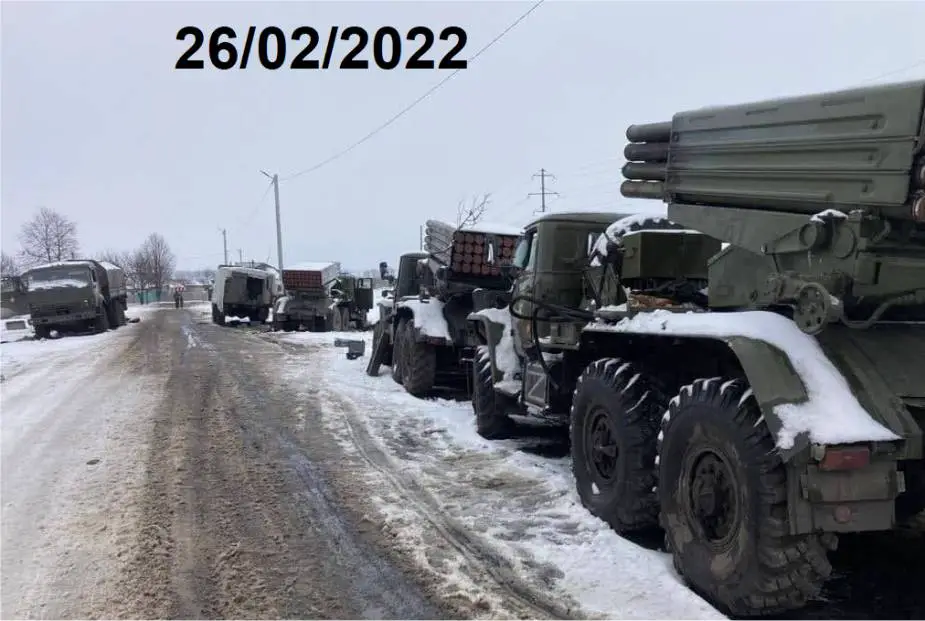
BM-21 Grad 122mm MLRS Multiple Launch Rocket System Russia
BM-21 Grad 122mm MLRS
The BM-21 Grad is a Soviet truck-mounted 122-mm multiple rocket launcher, developed in the early 1960s. It entered into service with the Soviet Army in 1963 to replace the aging 140 mm BM-14 system. The main role of the BM-21 Grad system is to support the division with suppressive fire to counter anti-tank missile, artillery and mortar positions, destroy strong points and eliminate enemy nodes of resistance on the immediate battlefield.
The BM-21 can launch rockets directly from the cab or remotely from outside of the truck cab with a 64-meter cable. Standard rockets have a maximum firing range of 20 km, but with the use of latest generation of rockets the range can be increased up to 35/40 km.
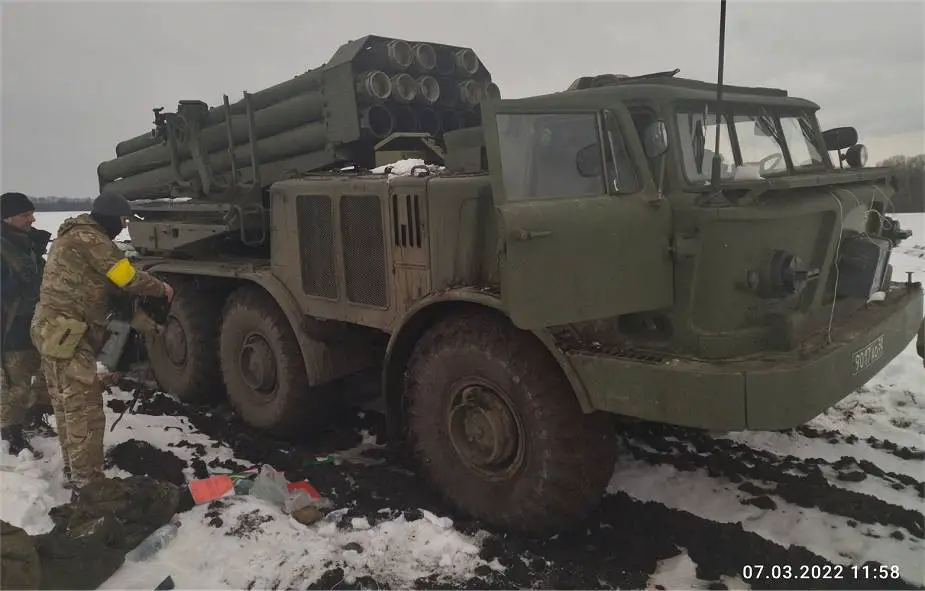
BM-27 Uragan 220mm MLRS Multiple Launch Rocket System Russia
BM-27 Uragan 220mm MLRS
The BM-27 Uragan is a Soviet-made self-propelled Multiple Launch Rocket System (MLRS) mounted on an 8x8 truck chassis ZIL-135LM. The BM-27 was first seen in 1977. The BM-27 is designed to engage any type of group targets, soft-skinned and armored vehicles, and military and industrial defense facilities. The system can be used in conditions of enemy's application of the nuclear, chemical, bacteriological weapon at any time, during night and day in various climatic conditions at air temperature from -40° to +50°.
The BM-27 fires rockets that are equipped with high-explosive fragmentation, chemical, and scatterable-mine sub-munitions warheads. The fin-and spin-stabilized rockets are estimated to have a range of 35 to 40 km, greatly exceeding the ranges of earlier Soviet heavy rocket launchers. The maximum rate of fire for the BM-27 is approximately one round per second. The BM-27 can be reloaded with a second set of 16 rockets in up to 20 minutes.
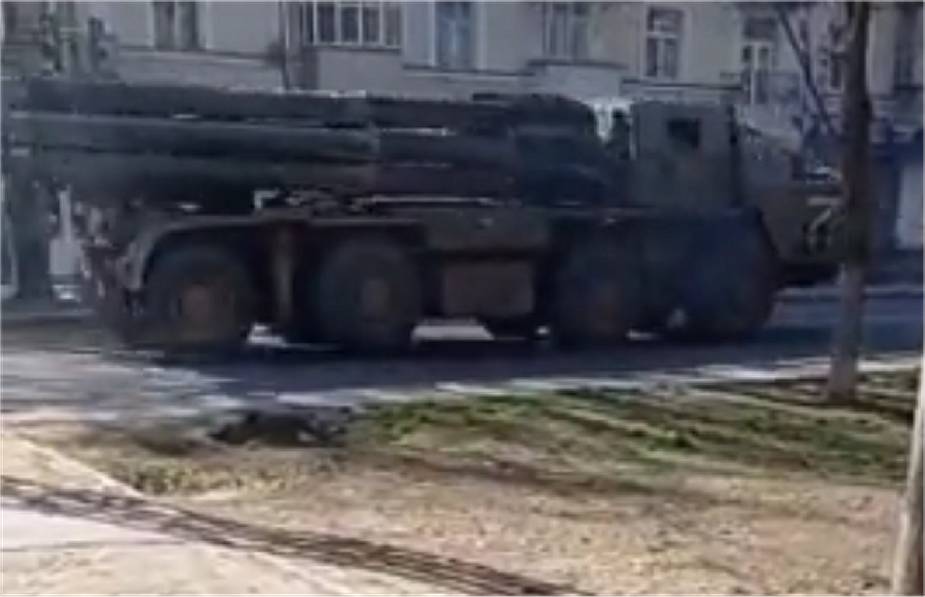
BM-30 Smerch 300mm MLRS Multiple Launch Rocket System Russia
BM-30 Smerch 300mm MLRS
The BM-30 Smerch 9A52 is a Russian-made 300mm heavy multiple rocket launcher system MLRS. . The BM-30 Smerch 9A52 was first seen by the West in 1983 and is entered in the Russian army in 1987. The BM-30 Smerch 9K58 is designed to counter tactical missile systems, army aviation at staging airstrips, as well as rocket, artillery and mortar battalions and batteries, command post, and manpower concentration areas.
The BM-30 Smerch 9K58 launcher vehicle is equipped with 12 launcher tubes. The BM-30 Smerch can fire the 9M55K 300 mm rocket. The 300 mm rocket tube arrangement is two separate banks of four with a connecting roof of the remaining four tubes overlying the inner tubes of the banks. The rocket used is of 300 mm caliber, fitted with a `self-contained powered-flight phase control system which provides an increase in fire precision by a factor of two and inaccuracy by a factor of three as compared to unguided rockets. The minimum range is 20,000 m and the maximum range is 70,000 m.
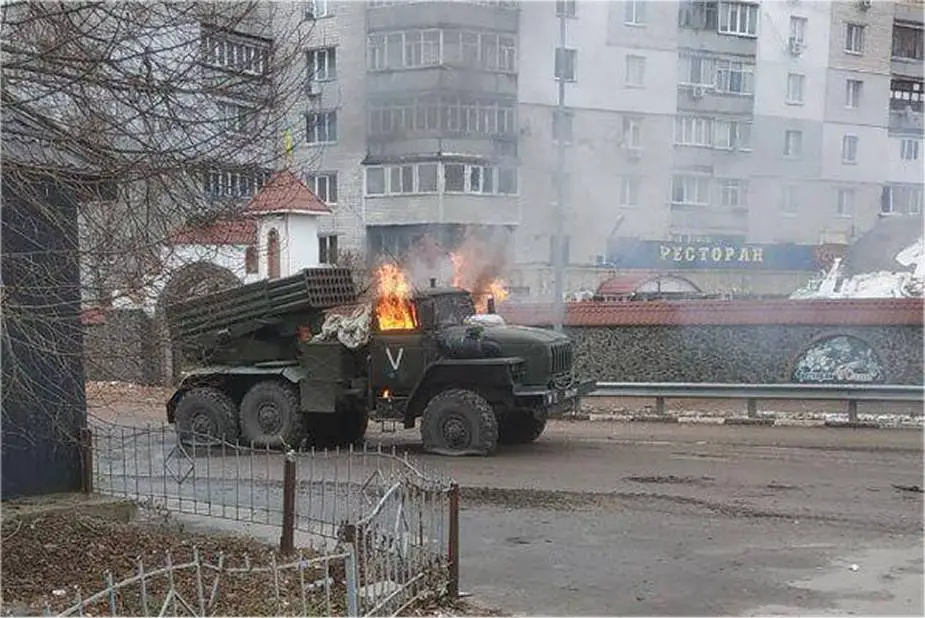
2B17 Tornado-G 122mm MLRS Multiple Launch Rocket System Russia
2B17 Tornado-G 122mm MLRS
The Tornado-G MLRS (Multiple Launch Rocket System) is an improved version of the standard Russian-made 122mm BM-21 rocket launcher system based on a Kamaz or Ural-4320 truck. The Tornado-G has been designed to be fully automatic. The operating crew has been reduced to three men compared to the six-man crew of the BM-21 Grad.
The Tornado-G is equipped with a bank of 40 launch tubes 122 mm arranged in a rectangular shape that can be turned away from the unprotected cab. The rocket tube arrangement is a single rectangular bank of four layers each with 10 tubes. The roof of the Tornado-G crew cab is fitted with a small antenna for the GLONASS satellite navigation system. It can fire upgraded 122 mm Grad HE-Frag and HE/HEAT rocket variants, 9M538, 9M539, and 9M541. The new rocket has a much longer warhead section but without any increase of the overall length. The rockets have a maximum range of 30 km. According to Russian military sources, the new rockets of the Tornado-G could have a maximum firing range of 90 km.
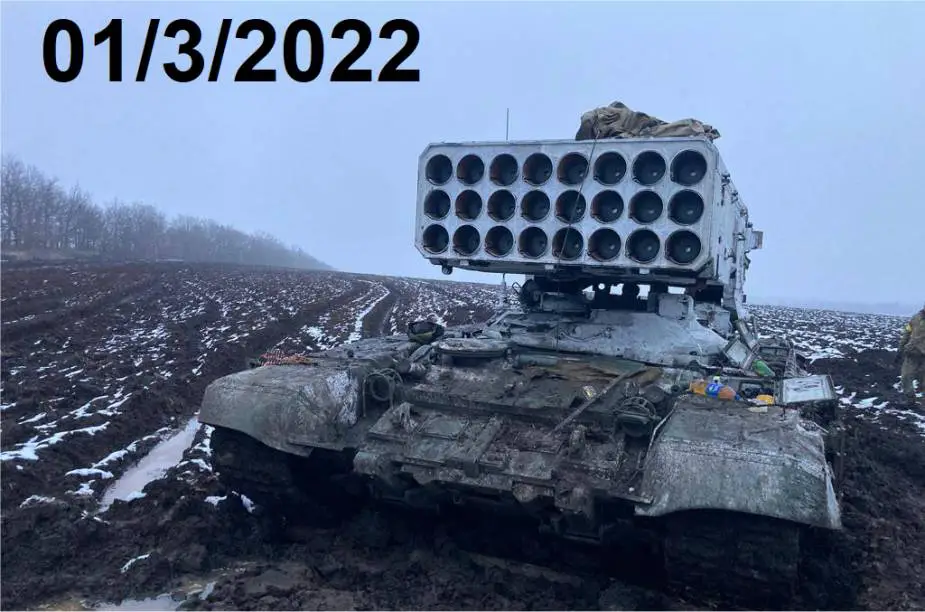
TOS-1A Heavy Flamethrower System rocket launcher system Russia
TOS-1A 220mm MLRS
The TOS-1A is a Russian-made Heavy flamethrower system that is designed for fire support of infantry and tanks, defeating enemy personnel at an unconcealed environment and under the shelter in various kinds of offensive and defensive combat action, and also for incapacitation of light armored transport and vehicles.
The TOS-1A fires an unguided missile via ballistic course after its boosting by a solid-fuelled thrust engine. The projectile nose is equipped with special thermobaric explosives. At missile fuse activation at the target area, central initiation - destructive charge destructs a thin-walled capsule of the projectile nose and dispenses thermobaric explosives at ground air lair. At the same time inflammation of the explosives occurs simultaneously transferring into the explosion. It produces a powerful blast wave and a high-temperature impulse, which destructs the personnel and vehicles of the enemy. It can fire rockets with thermobaric warhead with a range from 600 m to 6 km.
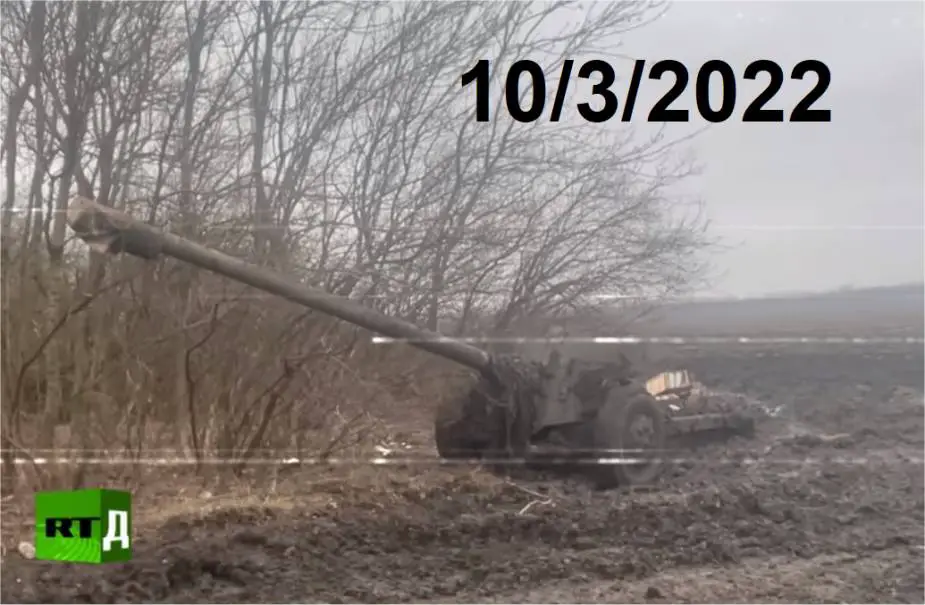
MT-12 100mm Towed Gun Ukraine
ARTILLERY UKRAINE
MT-12 100mm Towed Gun
The MT-12 Rapira is a Soviet-made towed anti-tank gun that was developed in late 1960. It is an improved version of the T-12 anti-tank gun. It can fire different types of ammunition including the Armor-Piercing Fin-Stabilized Discarding Sabot (APFSDS), High-Explosive Anti-Tank (HEAT), and 4 High-Explosive Fragmentation (HE-FRAG). The APFSDS round has a maximum range of 3 km. The HEAT round has a maximum range of 5.95 km. The HE-FRAG round has a maximum range of 8.2 km
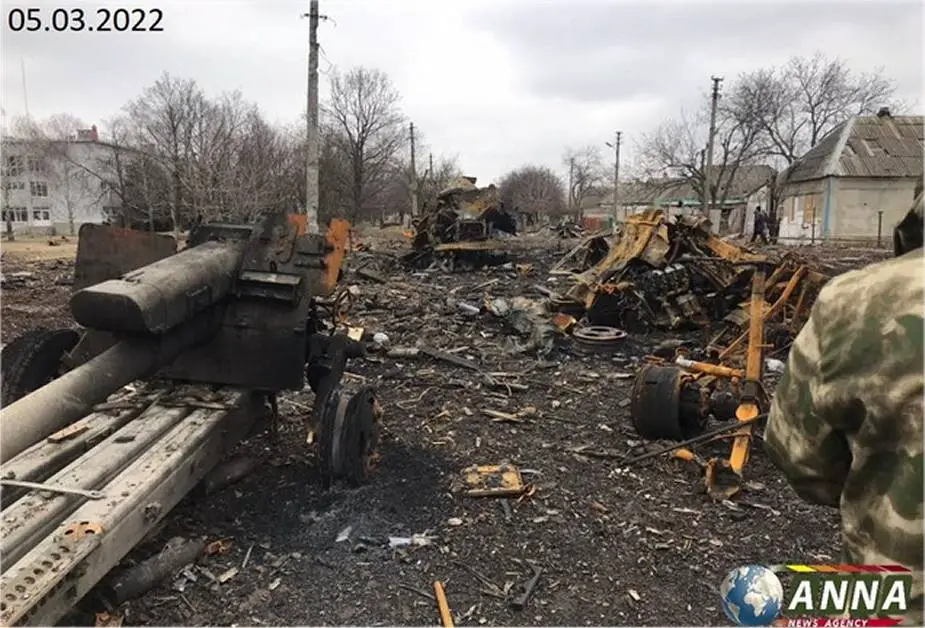
D-30 122mm towed howitzer Ukraine
D-30 122mm towed howitzer
The D-30, Russian designation 2A18, is a Russian-made 122 mm towed howitzer that first entered service in the 1960s with the Russian army. The D-30 is designed to defeat unsheltered and covered manpower, weapons and military equipment of the enemy at the forward edge of the battle area and to the regiment's mission depth.
The D-30 uses the 2A18 gun which is also used by the Russian 2S1 tracked self-propelled howitzer. The maximum rate of fire of the D-30 is 6-8 rounds per minute and about 75 rounds per hour. The D-30 fires FRAG-HE and HEAT-FS variable-charge, case-type, separate-loading ammunition. Using standard HE-Frag shells, the D-30 has a maximum firing range of 15.4 km.
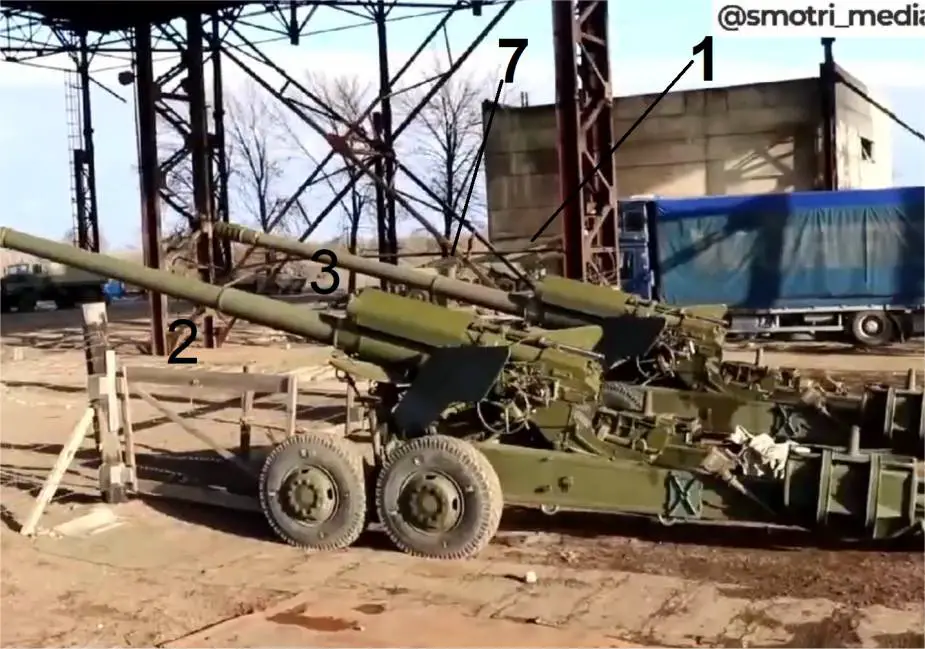
2A36 Giatsint-B field-gun 152mm Ukraine
2A36 Giatsint-B field-gun 152mm
The 2A36 Giatsint-B is a Soviet-made towed 152 mm field gun which entered into service with the Russian army in 1975. The gun is designed to suppress and destroy enemy manpower and equipment. It is also suitable for counter-battery fire. The weight of the 2A36 normally requires it to be towed by a heavy truck (like the KRAZ-255B). The KRAZ-255B is equipped with a special winch used to lift the trails in order to attach the gun’s lunette to the towing pintle.
The 2A36 fires its own range of 152mm ammunition including HE-Frag, rocket-assisted, armor-piercing, illumination, and smoke. It has a maximum firing range of 27 km using standard shells and 40 km with rocket-assisted shells.
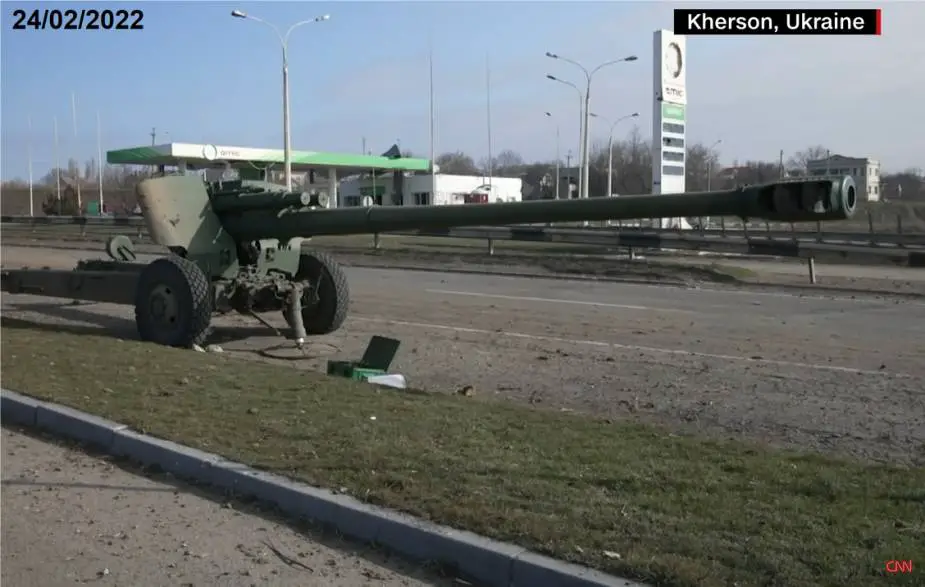
2A65 Msta-B 152m howitzer Ukraine
2A65 Msta-B 152m howitzer
The 2A65 "Msta-B" is a Soviet towed 152.4 mm howitzer. The "B" in the designation is an abbreviation for Buksiruyemaya, which means towed. This is the same 152-mm weapon as the 2S19 on a two-wheel towed carriage with split trails. The towed gun preceded the 2S19 into production.
The gun fires the same 152 mm ammunition types like the 152 mm 2S19 self-propelled artillery system and, more recently, a new family of separate loading (for example projectile and charge) 152 mm has been introduced. It has a maximum firing range of 28.9 km.
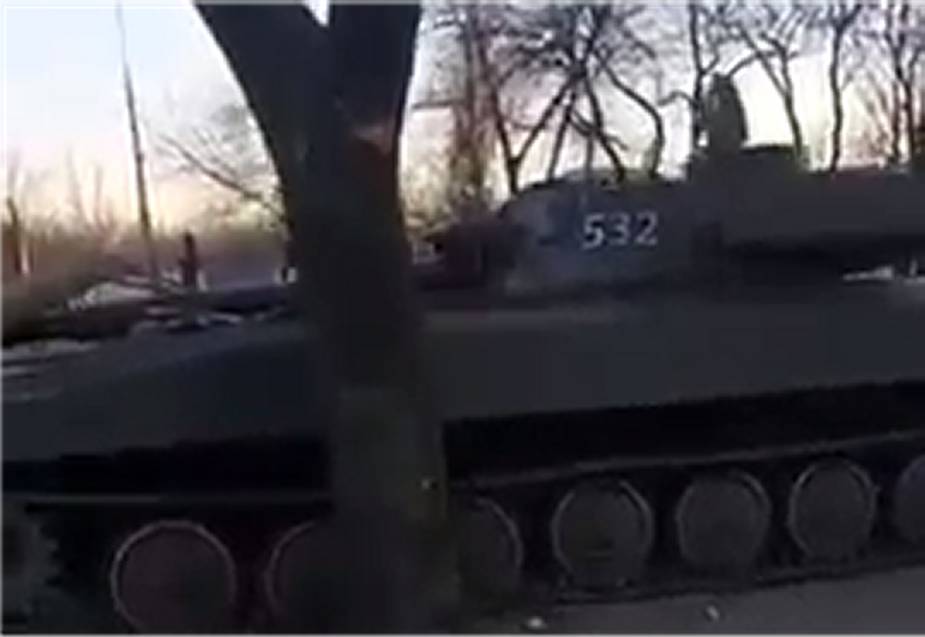
2S1 122mm tracked self-propelled howitzer Ukraine
2S1 122mm tracked self-propelled howitzer
The 2S1 Gvozdika is a Russian-made 122mm tracked self-propelled howitzer armored vehicle. The first prototype was ready in 1969. The 2S1 entered service with the Soviet Army in the early 1970s and was first seen in public at a Polish Army parade in 1974.
The 2S1 is armed with a modified version of the 2A31 cannon which is also fitted to the D-30 towed howitzer. The Gvosdika is compatible with all 122-mm munitions developed for the D-30 howitzer. These include fragmentation, HE-FRAG, HEAT, cluster, smoke, and illumination projectiles. A total of 40 rounds are carried, usually 35 HE-FRAG and 5 HEAT. The maximum range of fire with HE-FRAG projectile is 15.2 km.
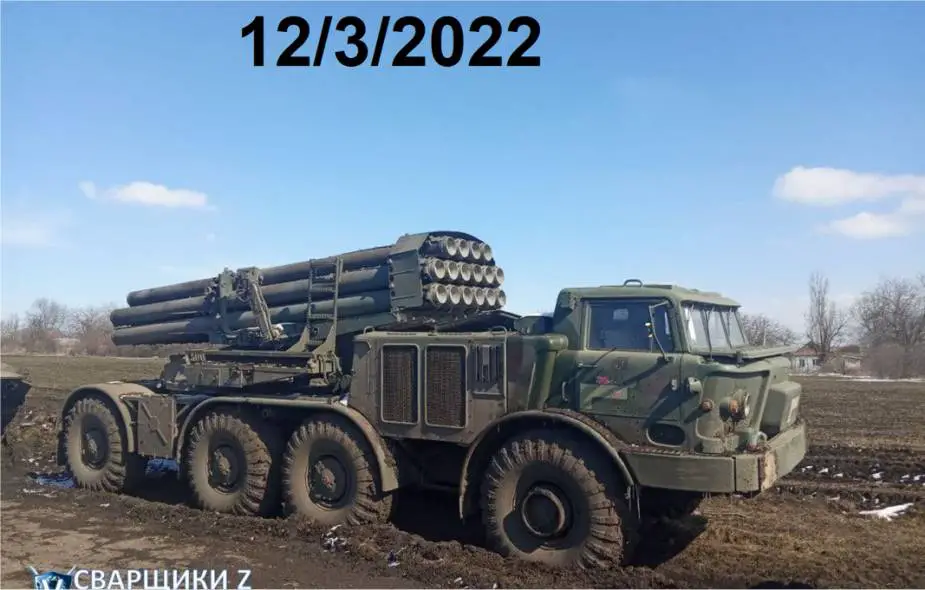
BM-27 220mm MLRS Multiple Launch Rocket System Ukraine
BM-27 220mm MLRS
The BM-27 Uragan is a Soviet-made self-propelled Multiple Launch Rocket System (MLRS) mounted on an 8x8 truck chassis ZIL-135LM. The BM-27 was first seen in 1977. The BM-27 is designed to engage any type of group targets, soft-skinned and armored vehicles, and military and industrial defense facilities. The system can be used in conditions of enemy's application of the nuclear, chemical, bacteriological weapon at any time, during night and day in various climatic conditions at air temperature from -40° to +50°.
The BM-27 fires rockets that are equipped with high-explosive fragmentation, chemical, and scatterable-mine sub-munitions warheads. The fin-and spin-stabilized rockets are estimated to have a range of 35 to 40 km, greatly exceeding the ranges of earlier Soviet heavy rocket launchers. The maximum rate of fire for the BM-27 is approximately one round per second. The BM-27 can be reloaded with a second set of 16 rockets in up to 20 minutes.
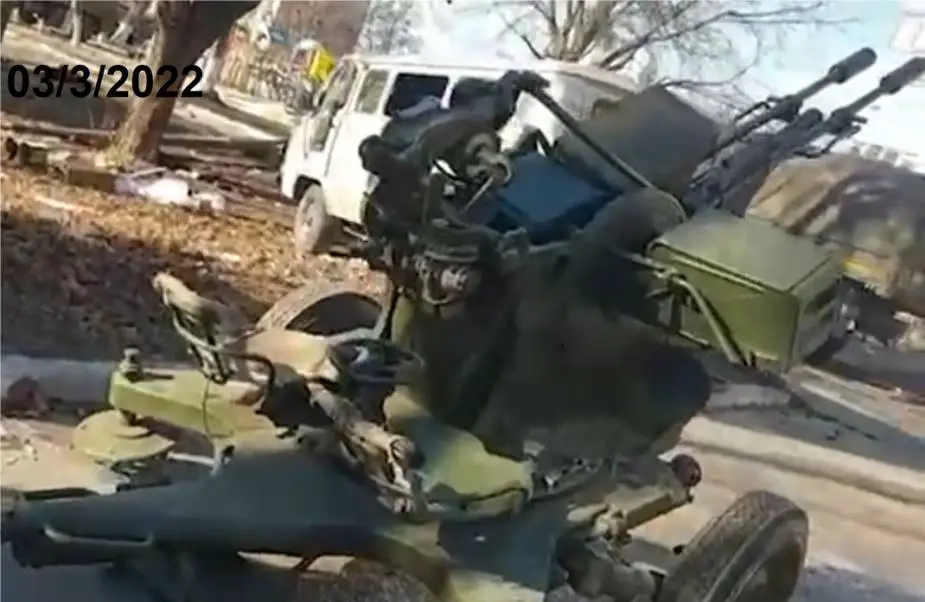
ZU-23 23mm anti-aircraft gun Ukraine
ZU-23 23mm anti-aircraft gun
The ZU-23-2, also known as ZU-23, is a Russian-made towed 23 mm anti-aircraft twin-barreled automatic cannon. At the end of World War II, the standard anti-aircraft gun was the ZPU series, armed with a 14.5 mm machine gun. ZU-23-2 was developed in the late 1950s. It was designed to engage low-flying targets at a range of 2.5 km as well as armored vehicles at a range of 2 km and for direct defense of troops and strategic locations against air assault usually conducted by helicopters and low-flying airplanes.















